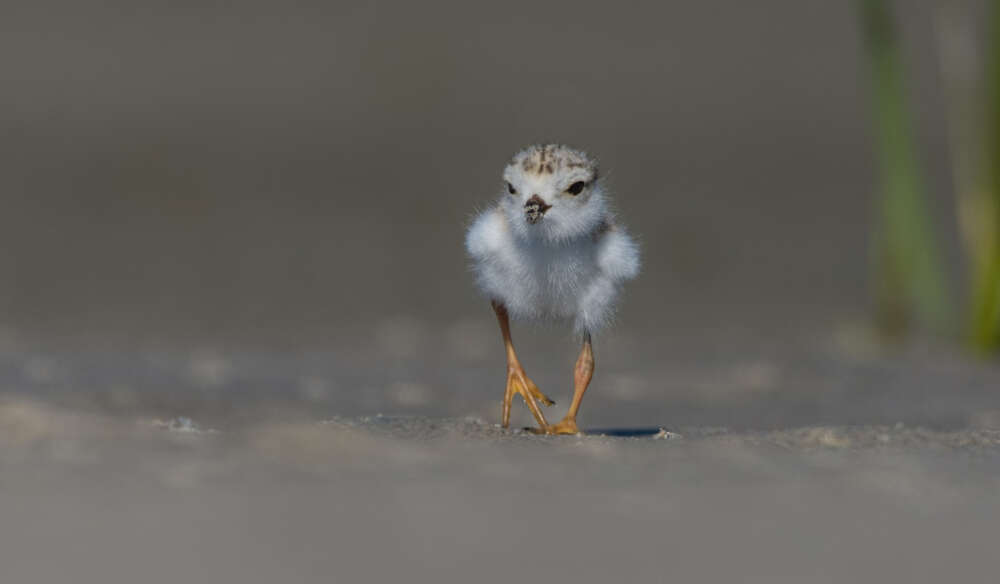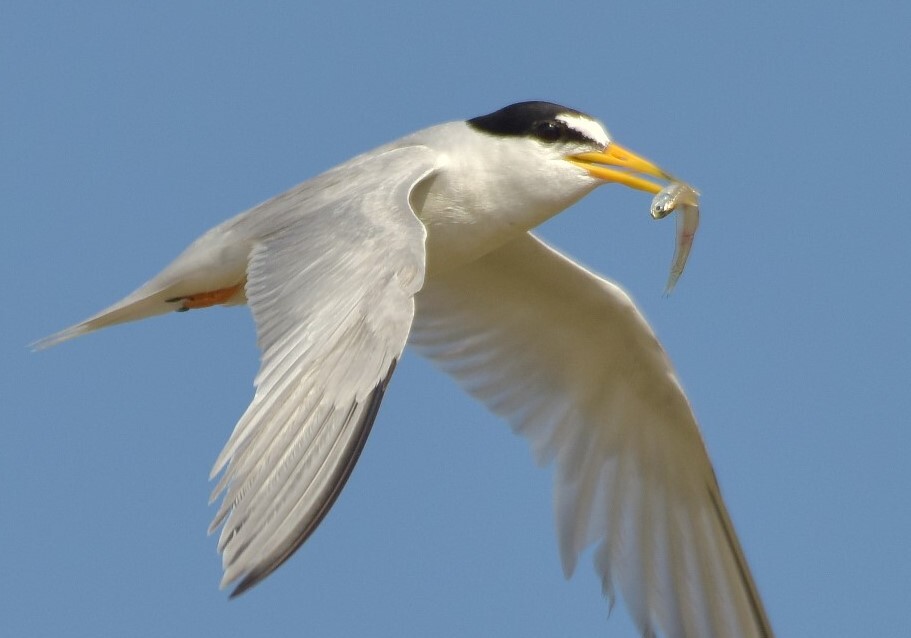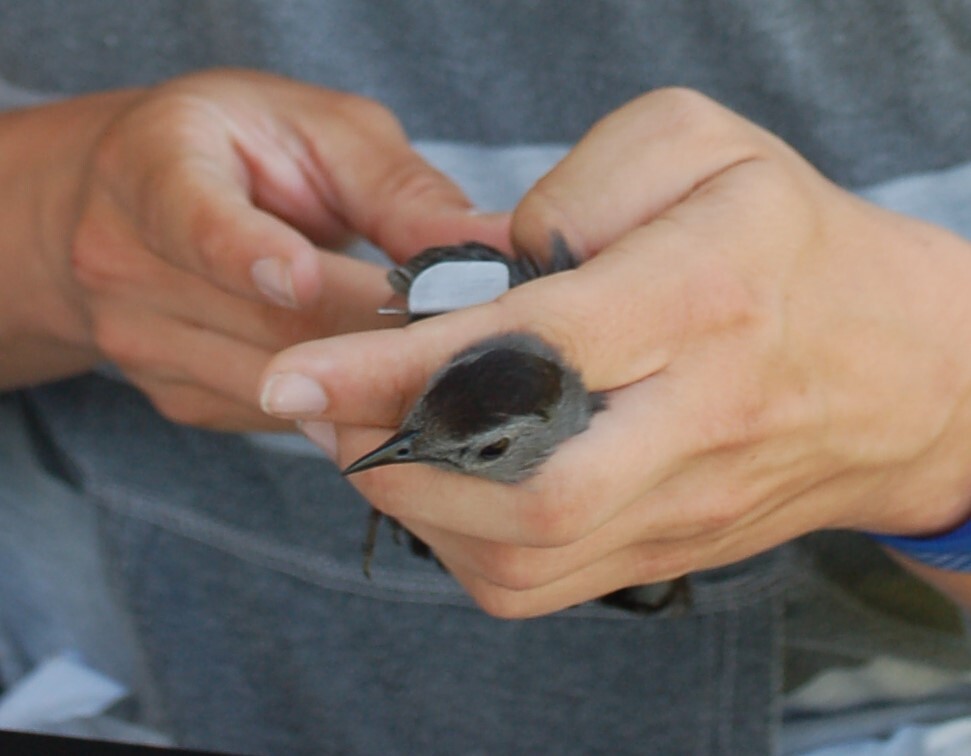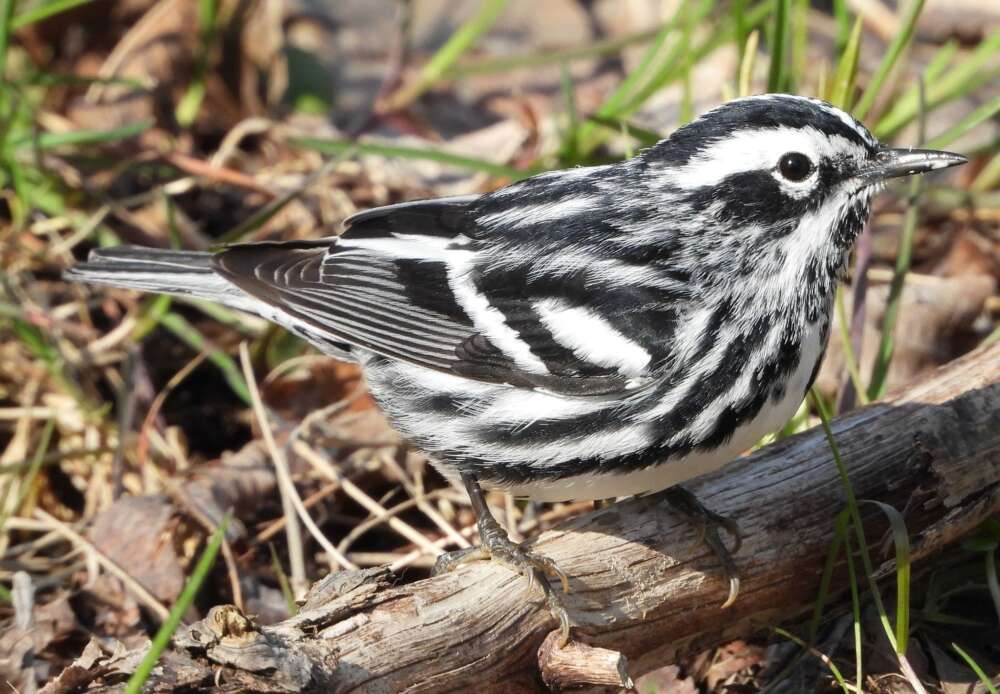The Wrack
The Wrack is the Wells Reserve blog, our collective logbook on the web.
The Wrack is the Wells Reserve blog, our collective logbook on the web.
Many bird biologists welcome winter as a time to enter, analyze, and report on the data they collected the previous spring, summer, and fall. In February, the Wells Reserve received two reports, one from partners who monitor beach-nesting birds and another from those who band resident and migratory species. Here's a quick summary of what they found, plus a glance at a couple of other site-specific avian investigations.
The 2022 Maine Coastal Birds Project Report is a product of teamwork; Maine Audubon, the Maine Department of Inland Fisheries and Wildlife, and the U.S. Fish and Wildlife Service / Rachel Carson National Wildlife Refuge work together to monitor and manage piping plovers and least terns. Maine Audubon has been at it since 1977 for the terns and 1981 for plovers. These days, Laudholm Beach is one of five beaches where Rachel Carson NWR biologists and technicians take responsibility for monitoring and management. (Altogether, 28 beaches are being monitored in Maine.)
Four pairs of piping plovers made eight nest attempts on Laudholm Beach in 2022. Eggs hatched at two of those nests, resulting in six chicks successfully fledging. Predators, possibly foxes or crows, took four nests that managers could not protect with exclosures due to rocky substrate. Two other nests were lost to washover during high tides.

Altogether, 140 plover pairs nested at 24 Maine beaches in 2022—that's 15 more pairs than in 2021—and Maine's 252 fledglings was the highest number since monitoring began. Maine plovers produced 1.8 chicks per pair, on average. Predation and washover were the main reasons for nest losses, when a cause could be determined.
Records were set on two of Laudholm's neighboring beaches, with 19 pairs nesting on Ogunquit Beach and 40 chicks fledging from Wells Beach. These successes hinge on the multifaceted conservation efforts by the collaborating partners, including outreach, enforcement, predator control, and electric fencing, along with traditional techniques like exclosures and symbolic fencing. Landowners and the beach-going public get some credit, too, because cooperation and respect are essential in the spaces that birds share with people.
For eight straight years now, monitors have detected at least 60 pairs of nesting plovers in the state. And it's been 4 years for 89+. But given the instability and popularity of their nesting habitat, piping plovers are never far from disaster. As the report warns: "The population status of Piping Plovers in Maine remains precarious and the birds continue to need intensive management."
Laudholm Beach was a "bright spot" for Maine's least terns in 2022; 23 nesting pairs produced at least 18 fledglings, the highest pair count and second highest fledgling count since monitoring began here in 1977. On the dark side, the Crescent Surf Beach colony, just over the river from Laudholm Beach, welcomed 102 nesting pairs but produced no young. Why the dramatic difference? First, a solar-powered electric fence around parts of the Laudholm colony prevented mammalian predators from entering the nest area. Second, tidal overwash caused major nest loss on narrower-than-usual Crescent Surf.
Altogether, tern monitors documented a minimum of 277 pairs in Maine, the third highest count on record.

Once a week from June to August, weather permitting, scientists from the Biodiversity Research Institute traveled to the reserve, opened seven mist nets at dawn, and proceeded with catch-and-release for 6 hours. Over 9 dates in 2022, the crew accumulated 273 net hours and handled 141 birds of 23 species. Ninety-one birds received new bands; the remainder were recaptures (17 had been banded here in prior years).
The most-frequently captured species were gray catbird (46), song sparrow (14), American robin (12), black-capped chickadee (9), and eastern towhee (9). Highlights included a migrating magnolia warbler and an early southbound Swainson’s thrush.

Continuing a long-term project in cooperation with the Maine Medical Center Vector-Borne Disease Lab, technicians gathered 367 ticks from netted birds. Shrub-frequenting, ground-foraging species carried the heaviest tick load: eastern towhee, brown thrasher, gray catbird, American robin, and house wren.
BRI shares its banding data with the U.S. Geological Survey Bird Banding Lab and Maine Department of Inland Fisheries and Wildlife.
Since 2012, the Wells Reserve staff has regularly surveyed Laudholm Beach for dead birds as part of SEANET, the Seabird Ecological Assessment Network. Our local program was on hiatus during 2022.
Along the Knight Trail, the reserve hosts an automated radio-telemetry station (managed by Rachel Carson NWR) as part of the Motus Wildlife Tracking System. The station picks up signals from tiny beacons attached to birds and other flying animals. The beacons send a coded microburst that is unique to a tagged individual, so its travels can be tracked across the Motus network. It's not precise—a receiving station can detect signals from several miles away—but for animals that routinely travel great distances, the collective data reveals a lot about their movement.
During 2022, the reserve's Motus station detected eight species: semipalmated plover, American kestrel, bank swallow, veery, Swainson's thrush, blackpoll warbler, yellow-rumped warbler, and black-and-white warbler. Motus records show the blackpoll was tagged April 14, 2022 in Colombia. It was detected on May 25 in Wells.
